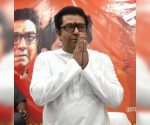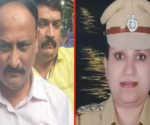Train concert: Baalti’s fusion of global sounds and Mumbai’s local vibes. – The Times of India

There was nothing ordinary about the compartment of a recent second-last Churchgate-bound local train, where some commuters took off their headphones to enjoy good music. Shoulders swayed, lips stretched into grins, and fingers tapped on thighs involuntarily as a 30-odd-kg DJ console, manned by two NY-based desi boys—who like to use ‘vibe’ as a verb—drowned out mundane announcements with bassy electronic tracks. These tracks fused little-known 1990s Tamil songs with rare Punjabi numbers from India and its neighbours.
From the neon ticker displaying Hindi instructions to switch off fans when not required, to the elderly gentleman in the divyangjan compartment behind flashing a sign-language approval to the young DJs while getting off, many uniquely Mumbai moments conspired to animate ‘Borivli to Churchgate’. This video features the moving concert by Baalti, an NY-based musician duo comprising Mumbai’s Mihir Chauhan and Delhi’s Jaiveer Singh, gaining currency around the globe for bringing South Asian music to the club scene.
“Some of us use headphones, some of us turn into a human choir to entertain ourselves during the commute. We decided to do what we do best,” says Dhiraaj Doriwala, the DJ who orchestrated Baalti’s spontaneous filmed concert in Mumbai following his own successful concert in motion. Struck by the novel sight and the sound of a bhajan mandali on a train as a recent inhabitant of Mumbai, Surat-bred Doriwala turned a train ride from Borivli to Bandra into a moving hip-hop set some months ago, unintentionally raking up a million views on YouTube. Following his successful ride, Doriwala decided to reach out to Baalti via Instagram, not only as a fan but as the young founder of Crab Culture, a platform that highlights talented artists.
“They immediately came on board,” recalls Doriwala about Mihir, who attended classical concerts with his family while growing up in Vile Parle, and Jaiveer, for whom qawaalis and ghazals were part of the default soundtrack of his childhood in Delhi. A symptom of the global ascent of dance floor music in unconventional settings, the experimental video—dripping with homegrown kitsch a la Hanumankind aesthetic—piques your curiosity about the lanky DJs at the centre who met on the first day of their freshman year in the US. “We were in the same dorm and we had a band in college, but we were doing super different stuff than what we do now,” recall the drummers who used to look down on dance music as adolescents.
Mihir—whose playlist was full of lo-fi instrumental hip hop by 9th Wonder, Pete Rock, and JD—would silently curse festival processions that traversed SV Road with huge sound systems for keeping him up at night. Meanwhile, Jaiveer, a drummer and fan of rock, funk, and punk, “was super anti-electronic music” and didn’t even see it “as a real art form”. Things changed when Mihir started using a fake ID to get into Bandra nightclubs that introduced him to exciting homegrown electronic artists of the time, such as Dualist Inquiry aka Sahej Bakshi and Sandunes aka Sanaya Ardeshir. Meanwhile, in Delhi, Jaiveer discovered international beatmakers such as Aphex Twin, Four Tet, and J Dilla.
Underground clubs they frequented in the US as students opened their eyes, ears, and minds further. “These are intentional spaces with no judgement or racism or homophobia,” says Jaiveer. “Seeing the strong communities that build these spaces for people to just dance and feel liberated was a big draw for us,” he adds. Musically, too, dance music, they say, felt more “fresh and interesting and forward-thinking” than the guitar band stuff they did in the past. “Lots of crews and talented South Asian folks here are doing interesting things in their own ways. For a lot of us growing up, being an artist wasn’t even a realistic career goal, so seeing people who look like us crush it in the scene really is liberating and inspirational,” says Mihir.
After graduating in 2020, they started testing out working together on dance music. “Before we knew it, we had 10 tracks or so done!” say the duo whose name ‘Baalti’ embodies their playful aesthetic. “People who don’t speak Hindi often assume it’s something deep and meaningful when it’s literally just ‘bucket’,” says Jaiveer, who believes this to be “a really good metaphor for how people in the West sometimes only value other cultures for being deep and meaningful when, in reality, there are lighthearted and playful sides to them as well.”
To showcase these sides, sampling or reusing a portion (or sample) of an older song becomes the core of their creative process. “We love digging for interesting rare records, finding interesting audio artefacts, and doing things you wouldn’t expect with more familiar sounds,” say the duo whose tracks often feature samples from India, Pakistan, and Bangladesh, including rare Tamil music from the 90s “that flew under the radar”. “Composers like Ilayaraja and singer SP Balasubramanian were incredibly prolific,” says Jaiveer. “Each of their songs has like five songs in them. A track might start one way but then have a totally new section with completely different instrumentation that lasts just for 30 seconds!” Mihir chimes in.
SPB’s vocals set the tone for their setlist for ‘Borivli to Churchgate’, which starts off with “chill” tracks that are familiar and fun before going off into “full dance masti club mood.” “At one point in the video, you can see a gentleman behind dancing in the divyangjan dabba. He was speech impaired and conveyed his appreciation in sign language,” says Doriwala. “Most of the crowd is behind the camera and not visible, but they were generally all vibing and amused. Some of them waved at us as they got off at their stops. Hopefully, none of them missed their stop because of us!” say the duo that missed its stop. By the time Mihir and Jaiveer realised they reached Churchgate, it was too late: “We packed up in a panic but ended up at the rail yard and had to jump the fence to get out.”
















